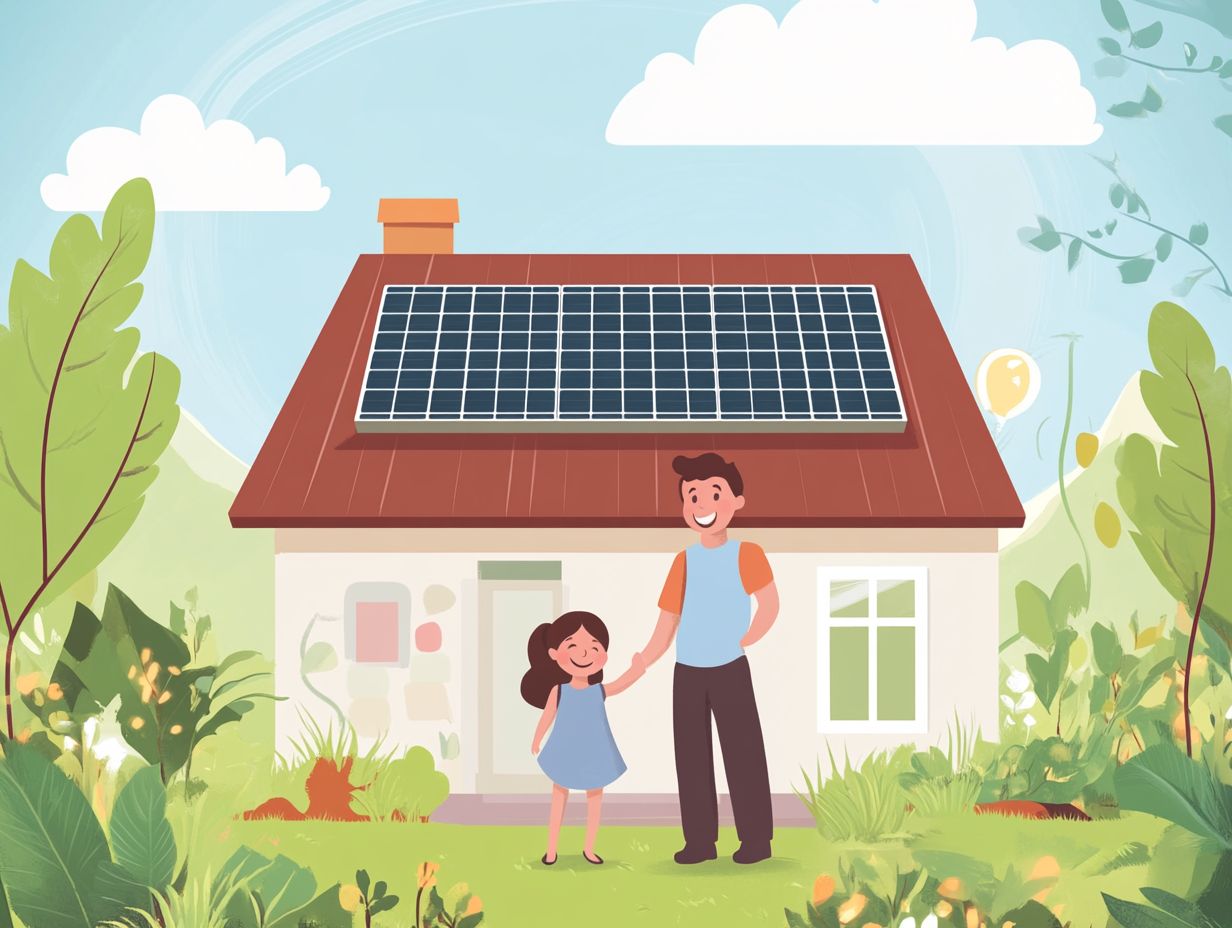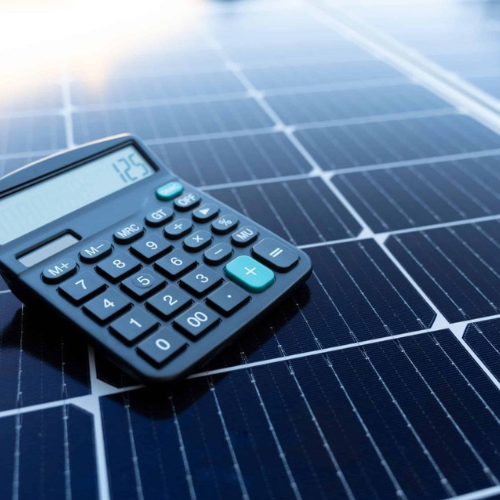Contents
- 1 A Comprehensive Guide to Government Subsidies for Solar
- 2 Different Types of Government Subsidies for Solar Energy
- 3 Eligibility and Application Process for Government Subsidies
- 4 The Impact of Government Subsidies on the Solar Industry
- 5 Frequently Asked Questions
- 5.1 How do government subsidies help homeowners afford solar?
- 5.2 What types of government subsidies are available for homeowners to afford solar?
- 5.3 How do tax credits help homeowners afford solar?
- 5.4 Are there any income restrictions for homeowners to receive government subsidies for solar?
- 5.5 Can homeowners combine multiple government subsidies to further reduce the cost of solar?
- 5.6 Are there any downsides to relying on government subsidies to afford solar?
A Comprehensive Guide to Government Subsidies for Solar

Government subsidies for solar energy are a game-changer when it comes to getting homeowners on board with renewable energy sources.
These financial incentives—think tax credits, grants, and rebates—are all about making it easier for you to install solar panels, which can help you save on those pesky utility bills and rack up some serious energy savings.
Plus, these programs are designed to boost energy efficiency and cut down on your overall carbon footprint. By raising awareness and offering a range of funding options, local and federal government initiatives are really pushing for a more sustainable energy transition.
Understanding Government Subsidies for Solar Energy
Government subsidies are your ticket to financial support from local, state, and federal governments, all aimed at helping you jump on the solar panel and clean energy bandwagon.
These subsidies come in all shapes and sizes, like direct grants, tax credits, and low-interest loans, each crafted to make renewable energy easier and more affordable for you, whether you’re an individual or a business owner.
For example, federal tax credits let you deduct a nice chunk of your solar installation costs, which really helps lighten that upfront financial load. If you’re in states like California, you’ll find even more incentives that work hand-in-hand with federal programs, giving you even more reasons to invest in sustainable technologies.
By slashing the costs tied to renewable energy, these funding initiatives not only boost your energy independence but also play a part in the bigger picture of energy policy, helping us all move toward a more sustainable and eco-friendly future.
You can really see the impact of this support in the rising number of folks adopting solar energy across the country, proving just how crucial these programs are in creating a cleaner environment.
U.S. Department of Energy (DOE). (2021). Solar Energy Technologies Office: Funding Opportunities. Link
Different Types of Government Subsidies for Solar Energy
You’ll find several types of government subsidies available if you’re a homeowner looking to invest in solar energy, all aimed at making those solar installations more accessible and affordable.
These subsidies can come as tax credits, rebates, or grants that help slash the overall costs of going solar and encourage a cleaner environment.
Plus, community solar initiatives and solar tax exemptions add even more perks for homeowners by offering flexible funding options that make the switch to solar even easier.
Federal and State Tax Credits for Solar Energy
Tax credits are among the best government subsidies you can snag as a homeowner investing in solar energy. They offer significant financial perks that can really cut down your installation costs.
By taking advantage of these credits, you can lower your tax liabilities, which means more money stays in your pocket. Specifically, the investment tax credit (ITC) for solar energy lets you claim a percentage of the installation costs on your federal tax return, making it easier for you to go green.
This not only incentivizes you to make eco-friendly choices but also helps you save in the long run on your utility bills.
And let’s not forget, by bringing clean technology into your home, you’re not just enjoying immediate financial relief; you’re also playing a role in environmental preservation and energy independence.
It’s a win-win situation where your personal savings align nicely with a broader commitment to sustainability.
Rebates for Solar Panel Installation
Rebates are a fantastic way for you to save some cash when installing solar panels, thanks to government programs that cut down your upfront costs. This makes renewable energy way more accessible and affordable for everyone.
You’ll find these financial aids coming in different forms, like cash back and tax credits, which can really help lighten the load of those installation expenses.
You might also discover state-level incentives or utility-sponsored rebate programs aimed at encouraging solar adoption. Take California’s Solar Initiative, for example; it effectively subsidizes installations. This boosts participation and leads to impressive energy savings.
These successful programs show that rebates not only ease the financial strain on homeowners like you but also help pave the way for a sustainable future by reducing reliance on fossil fuels. In turn, this fosters a cleaner environment for everyone.
Bolinger, M., & Wiser, R. (2012). Understanding Trends in Wind Turbine Prices Over the Past Decade. Lawrence Berkeley National Laboratory. Link
Grants

Grants usually come from public funding initiatives that help you finance the installation of solar power systems and boost your energy efficiency.
These financial incentives are designed to lighten the load of those hefty upfront installation costs, making renewable energy solutions much more accessible for you and your family.
Typically, the application process involves submitting detailed project proposals to local or federal agencies, which will evaluate how viable your solar project is and what kind of energy savings you can expect.
Various organizations, including government bodies, non-profits, and utility companies, offer these grants to encourage residents like you to embrace eco-friendly technology. Community support is key here; the more residents in your area advocate for renewable energy initiatives, the better your chances of securing funding. It shows a shared commitment to sustainability and energy efficiency.
By creating a collaborative environment where everyone takes part in environmental responsibility, these grants not only help individual homeowners but also contribute to a larger movement toward a more sustainable future.
Government subsidies are essential for making solar energy more affordable for you as a homeowner. They help lower both your upfront costs and those pesky monthly energy bills.
With financial incentives like tax credits and rebates, these programs allow you to invest in solar panels while boosting your energy resilience and independence.
Plus, if you dive into some comprehensive financial planning, you can really maximize your savings and enjoy long-term energy benefits, all while increasing the overall value of your property.
Reducing Upfront Costs
One of the best ways you can benefit from government subsidies is by taking advantage of various funding options and solar financing models that can really cut down your installation costs.
These subsidies often come in the form of tax credits, grants, or low-interest loans, which help lighten the financial load when you’re making the switch to renewable energy solutions.
By making those upfront investments feel more manageable, you’re encouraged to look into diversifying your energy sources—think solar power, wind energy, or even energy-efficient upgrades for your home.
Innovative financing models, like power purchase agreements (PPAs) or leasing options, let you invest in renewable technologies with little to no initial capital. This makes adopting sustainable energy a realistic option for many households like yours.
Overall, this helps accelerate the shift towards greener energy sources and contributes to a more sustainable future for everyone.
Lowering Monthly Energy Costs
By taking advantage of government subsidies and investing in solar panels, you can significantly lower your monthly energy bills and enjoy substantial savings over time.
This renewable energy source taps into sunlight, converting it into electricity that powers your home. By doing this, you reduce your dependence on grid electricity and cut down on those utility costs.
As your energy needs are met through solar power, you’ll likely see your household budget improve, letting you put your money toward other important areas of life.
Over the years, those savings can add up to thousands of dollars, giving you not just immediate financial relief but also a way to build long-term wealth. Incorporating solar panels can truly change the economic game for you as a homeowner, allowing you to invest in new opportunities or make improvements around your home.
Eligibility and Application Process for Government Subsidies
Understanding the eligibility and application process for government subsidies is crucial for you as a homeowner looking to invest in solar energy. This knowledge helps you figure out if you can qualify for various financial incentives.
Each subsidy program has its own qualifying criteria, which might include things like your income level, where your property is located, and the type of solar technology you plan to install.
- Income level
- Property location
- Type of solar technology
By navigating local regulations and grasping the application steps, you can significantly boost your chances of snagging that funding assistance.
Criteria for Eligibility

The eligibility criteria for government subsidies usually depend on a few different factors like your income, the type of property you own, and where you live, along with any specific requirements set by local government programs.
These criteria can really vary based on the particular subsidy program you’re looking at, but they often take into account your financial situation and how energy-efficient your property is. For example, some homeowner associations might insist that your property meets certain energy consumption and energy efficiency standards before you can qualify for any financial assistance.
In terms of solar tax exemptions, they can seriously boost the financial appeal for homeowners wanting to install solar panels. These exemptions help offset those initial investment costs, making renewable energy and photovoltaic systems a lot more accessible.
Plus, it’s really important to understand your local zoning laws and homeowner association regulations since they can impact not just your eligibility but also the entire process of installing solar panels.
Steps to Apply for Subsidies
Applying for government subsidies for your solar energy projects involves a few key steps that you’ll want to follow to snag that funding assistance and take advantage of incentive programs.
First off, it’s super important to do your homework on the specific programs available in your area because each one might have its own set of requirements and perks. Once you’ve got that sorted, you’ll need to gather all the necessary documents, like proof of income, property ownership, and any existing energy assessments, and home equity reports.
Don’t overlook the importance of understanding the regulatory framework either; it’ll help you figure out the compliance requirements you need to meet.
Also, tapping into community solar initiatives can be a game-changer, providing you with extra support and resources that make navigating the application process a breeze while maximizing your potential benefits and energy savings.
The Impact of Government Subsidies on the Solar Industry
Government subsidies significantly impact the solar industry, boosting the adoption of solar energy among homeowners and fueling economic growth through job creation and investment in clean tech and green technology.
These financial incentives lower the barriers for getting solar panels installed at home and also encourage energy policy changes that support sustainable practices and energy transition.
The outcome? A thriving solar market that benefits you as a consumer and the economy as a whole, along with providing long-term savings and energy independence.
Increasing Adoption of Solar Energy
You can thank the increased adoption of solar energy largely to the financial incentives from government subsidies and financing options, which make it a lot easier for homeowners like you to install solar panels.
These incentives have really driven down installation costs, leading to a surge in solar panel installations across the country. For example, recent reports show that over 3 million homes in the U.S. have jumped on the solar bandwagon, resulting in an impressive 20% growth in household solar adoption just over the past year. This growth is further supported by the availability of solar loans and other project financing options.
Renewable portfolio standards (RPS) are also in play, setting some pretty strict requirements for energy providers to include a certain percentage of renewable energy in what they offer. This regulatory setup not only encourages utilities to invest in cleaner energy sources but also nudges you to consider solar power since you’re likely becoming more aware of the benefits and savings that come with renewable energy, including reduced utility costs and improved system efficiency.
So, this mix of financial incentives and regulatory pressures is playing a major role in shaping the future of energy for everyone.
Economic and Environmental Benefits
The economic and environmental perks of government subsidies for solar energy are pretty impressive, right? They lead to job creation, help reduce carbon footprints, and boost energy resilience and energy security.
These subsidies do more than just promote the growth of innovative industries; they also nurture a culture of sustainability in local communities. When governments invest in renewable energy, they’re opening the door to cleaner air and lower greenhouse gas emissions, which is great for public health and helps combat climate change.
As more communities jump on the solar bandwagon, they’re not only cutting down on their reliance on fossil fuels but also opening up new economic opportunities, like local manufacturing and installation jobs, and promoting eco-friendly practices.
In the long run, embracing sustainable energy practices sets the stage for a more stable and prosperous future, balancing economic stability with environmental care for generations to come, and reducing the overall ecological impact.
Frequently Asked Questions

How do government subsidies help homeowners afford solar?
Government subsidies provide financial assistance to homeowners to help offset the cost of installing solar panels. This can make solar energy more affordable and accessible for homeowners, while also contributing to energy savings and home improvement.
What types of government subsidies are available for homeowners to afford solar?
There are a variety of government subsidies available for homeowners, including tax credits, rebates, and federal grants. These subsidies can vary depending on location and the specific program.
How do tax credits help homeowners afford solar?
Tax credits allow homeowners to deduct a portion of their solar panel installation costs from their taxes. This can significantly reduce the overall cost of going solar and improve the return on investment.
Are there any income restrictions for homeowners to receive government subsidies for solar?
Some government subsidies for solar may have income restrictions, while others may be available to all homeowners regardless of income. It is important to research and understand the specific eligibility requirements for each program and how they may impact your budget-friendly solar adoption plan.
Can homeowners combine multiple government subsidies to further reduce the cost of solar?
Yes, it is possible for homeowners to combine multiple government subsidies to further reduce the cost of solar. For example, a homeowner may be eligible for both a tax credit and a rebate, which can greatly offset the cost of installation and financing solar projects.
Are there any downsides to relying on government subsidies to afford solar?
One potential downside is that government subsidies may not always be available or may be subject to change. It is important for homeowners to fully understand the terms and conditions of each subsidy program and have a backup plan, such as alternative energy financing options, in case subsidies are no longer available.







